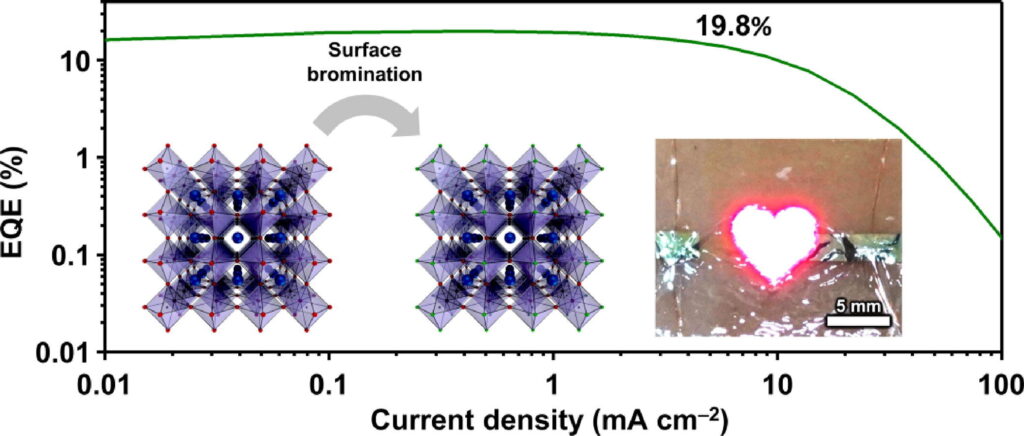DGIST Professor Jiwoong Yang’s team in the Energy Science and Engineering Department has successfully manufactured high-performance, skin-attachable perovskite pure red light-emitting devices to create various forms of wearable displays.
The research team worked collaboratively with UNIST Professor Moon Kee Choi’s team in the Materials Science and Engineering Department to develop these devices through selective surface modification of perovskite quantum dots, expecting their future use in diverse wearable products.
The paper is published in the journal Materials Today.
With the growth of wearable, mobile, and IoT technologies, the demand for wearable displays has increased. Perovskite emitters, commonly used in solar cells and light-emitting devices, are gaining attention as next-generation optoelectronic materials owing to their cost-effectiveness and efficient photovoltaic and light-emission properties and propelling research in wearable displays.
Traditional red perovskite materials were unsuitable for high-performance wearable displays owing to their low stability and electrical properties. To address this, the DGIST-UNIST research team successfully created pure red light-emitting devices through the simple surface modification of the perovskite light-emitting layers, thus significantly improving their stability and electrical properties.
In previous perovskite fabrication processes, surface modification was performed using iodine (I), a halogen element. However, the research team replaced iodine with bromine (Br), a halogen element with higher electronegativity, and increased the size of the perovskites beyond the original dimensions. This resulted in an improved surface-to-volume ratio with the same “band gap energy,” leading to the development of pure red light-emitting devices with exceptional stability and electrical properties.
Professor Jiwoong Yang from DGIST stated, “By selectively modifying the surface of perovskite quantum dots, we improved their stability and electrical properties, ultimately achieving an external quantum efficiency (EQE) of up to 19.8%. This research brings us closer to the commercialization of pure red perovskite displays.”
Professor Moon Kee Choi from UNIST added, “The newly developed light-emitting devices are expected to be widely applied not only in perovskite LED-based displays but also in VR, AR, and smart wearable device development.”
Provided by
DGIST (Daegu Gyeongbuk Institute of Science and Technology)


